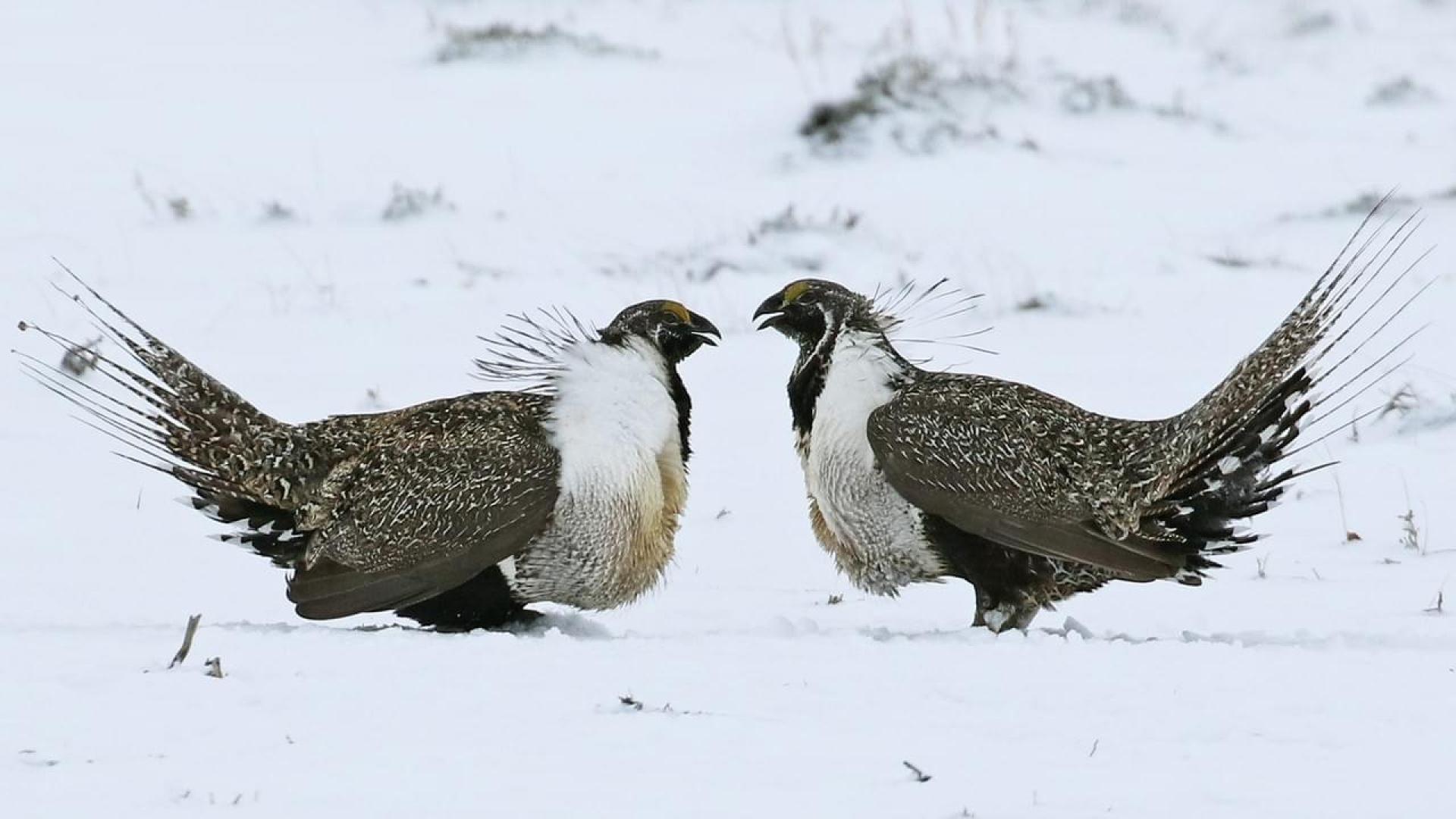
- Body
By Beth Burritt, Utah State University
Sage-grouse were once found in 16 western states and three Canadian provinces (Schroeder et al. 2004) but populations have experienced considerable range-wide declines over the past century and are now found only in 11 western states and two Canadian provinces. The species is indicative of the health of the sagebrush ecosystems important to many different species of wildlife including pygmy rabbits, sage thrashers, and sagebrush lizards. Population trends based on male lek attendance rates have continued to show declines range-wide with some local populations exhibiting dramatic decreases (Garton et al. 2011). Habitat loss and alteration have been identified as a primary cause for the range-wide sage-grouse population declines in the past century. Additional factors such as low nest success, low chick survival, and decreased hen survival also contribute to declines. Other identified threats include: increases in predators, disease, extreme weather, invasive weeds, pinyon/juniper encroachment, tall structures, and roads.
In 2010, the U.S. Fish and Wildlife Service (USFWS) designated greater sage-grouse as “warranted but precluded” making it a candidate species for listing for protection under the Endangered Species Act (ESA) of 1973 (USFWS 2010). The decision to designate sage-grouse as a candidate species for ESA protection was based on two factors. The first major factor was continued habitat loss and fragmentation due to human influences and increased frequency of wildfires which have resulted in range-wide population declines. The second limiting factor was the failure to find adequate regulatory mechanisms at the local, state, and federal levels to curtail continued habitat loss and fragmentation.
References:
- Garton, E.O., J.W. Connelly, J S. Horne, C.A. Hagen, A. Moser, and M.A. Schroeder. 2011. Greater Sage-Grouse population dynamics and probability of persistence. p. 293–381 in S. T. Knick and J. W. Connelly (editors). Greater Sage-Grouse: ecology and conservation of a landscape species and its habitats. Studies in Avian Biology (vol. 38), University of California Press, Berkeley, CA.
- Schroeder, M.A., C.L. Aldridge, A.D. Apa, J.R. Bohne, C.E. Braun, S.D. Bunnell, J.W. Connelly, P.A. Deibert, S.C. Gardner, M.A. Hilliard, G.D. Kobriger, S.M. McAdam, C.W. McCarthy, J.J. McCarthy, D.L. Mitchell, E.V. Rickerson, and S.J. Stiver. 2004. Distribution of Sage-Grouse in North America. The Condor 106:363–376.
- United States Fish and Wildlife Service (USFWS). 2010. Endangered and threatened wildlife and plants; 12-month finding for petitions to list the greater sage-grouse (Centrocercus urophasianus) as threatened or endangered; proposed rule. Federal Register accessed 6-13-2010.